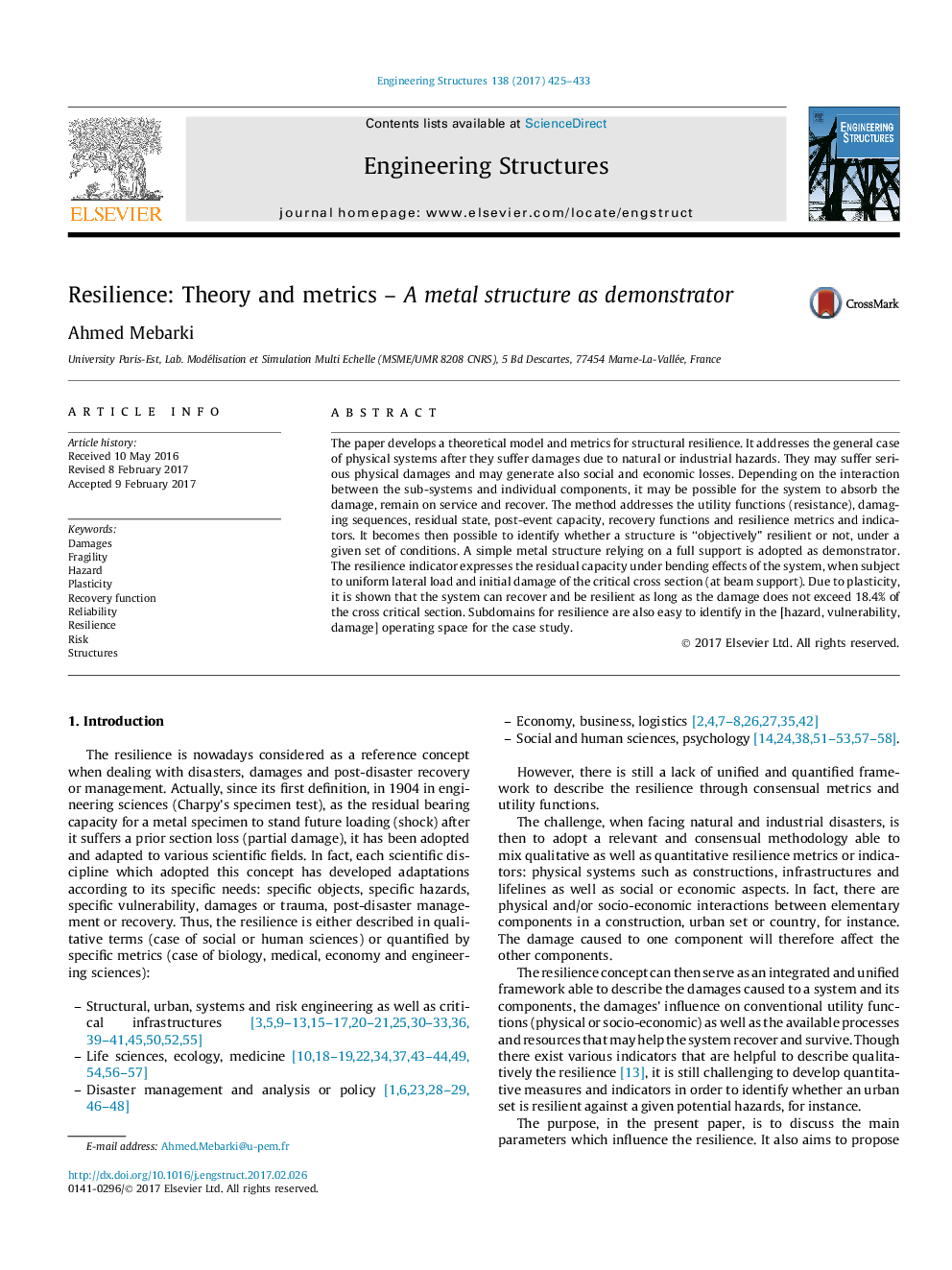| Article ID | Journal | Published Year | Pages | File Type |
|---|---|---|---|---|
| 4920341 | Engineering Structures | 2017 | 9 Pages |
Abstract
The paper develops a theoretical model and metrics for structural resilience. It addresses the general case of physical systems after they suffer damages due to natural or industrial hazards. They may suffer serious physical damages and may generate also social and economic losses. Depending on the interaction between the sub-systems and individual components, it may be possible for the system to absorb the damage, remain on service and recover. The method addresses the utility functions (resistance), damaging sequences, residual state, post-event capacity, recovery functions and resilience metrics and indicators. It becomes then possible to identify whether a structure is “objectively” resilient or not, under a given set of conditions. A simple metal structure relying on a full support is adopted as demonstrator. The resilience indicator expresses the residual capacity under bending effects of the system, when subject to uniform lateral load and initial damage of the critical cross section (at beam support). Due to plasticity, it is shown that the system can recover and be resilient as long as the damage does not exceed 18.4% of the cross critical section. Subdomains for resilience are also easy to identify in the [hazard, vulnerability, damage] operating space for the case study.
Related Topics
Physical Sciences and Engineering
Earth and Planetary Sciences
Geotechnical Engineering and Engineering Geology
Authors
Ahmed Mebarki,
